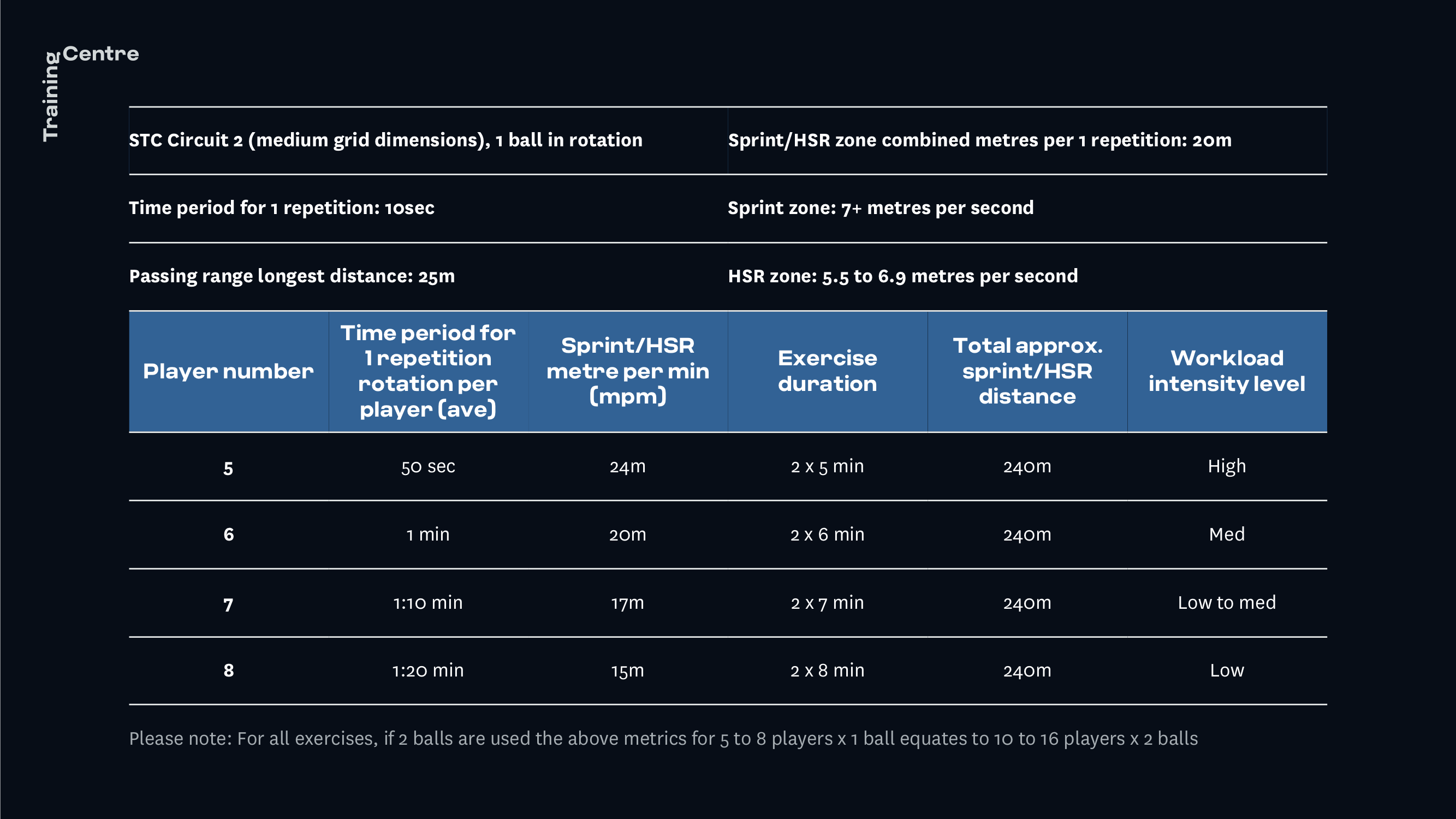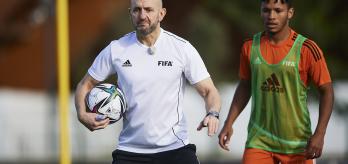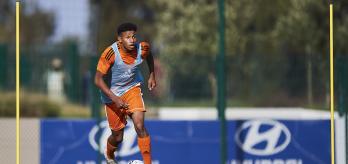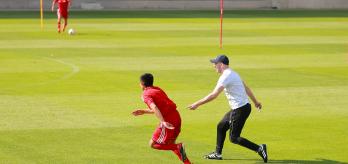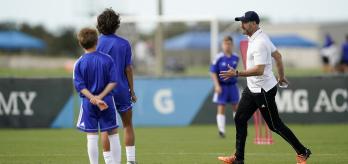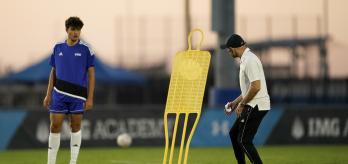All drills within circuit 2 include finishing on goal, which enhances player enjoyment and emphasises the technical and physical functionality aspect of the circuit.
The drills used for circuit 2 simulate various attacking combination moves. One of the key functional aspects relates to the cohesion between technique and tempo, which is targeted by a combination of timing and speed of movement with the timing and quality of the pass. These drills place a special focus on give-and-go sequences and a third player running in behind, with deep runs replicating breaking through lines, while runs higher up the pitch simulate the player powering in behind. The accelerations and high-speed running (HSR) replicate various angles of movement encountered in match scenarios. In addition, efficiency of movement, the technical balance of two-footedness and good footballing habits are all priorities in each exercise.
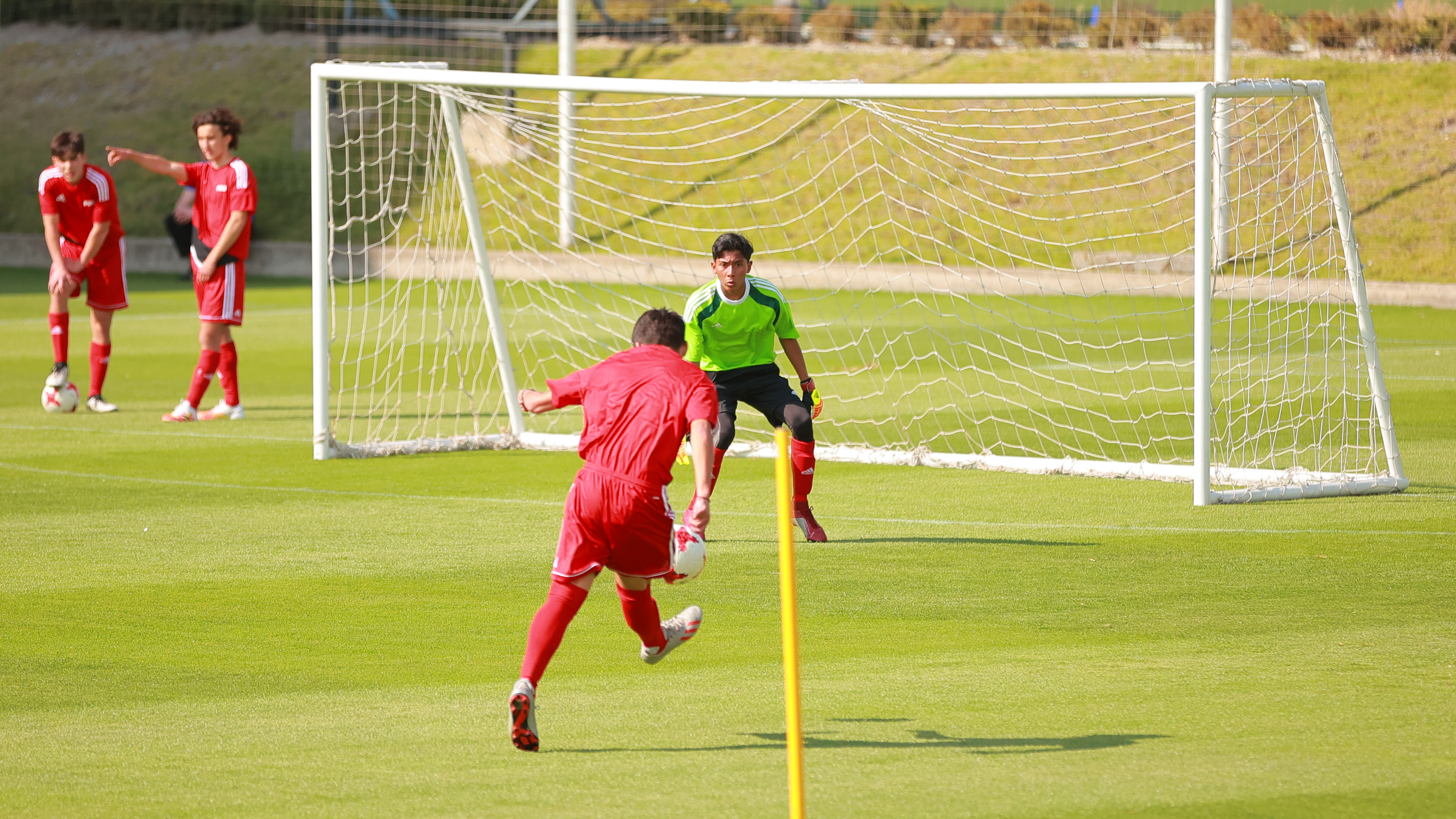
Circuit 2 features three grid sizes (small, medium and large) that reflect the sprint and HSR distances, as well as the passing ranges involved in the drills. All drills can be performed using one ball in rotation amongst a minimum of five players and a maximum of eight players, or two balls for between 10 and 16 players. The fewer the players involved, the greater the overall workload intensity.
For the purposes of this article, we have selected four drills from circuit 2 of speed technical coordination. These exercises are performed on a medium-size grid and feature a distance of 20-30m per repetition in the high-speed zones. The video presentations of drills 1, 2 and 3 include demonstrations of rotations featuring both one and two balls.
A table featuring the speed metrics and workload intensity is provided at the end of each session plan. It offers approximate figures regarding the distance covered in the sprint/HSR zones and the intensity of the exercises relative to player numbers. A table detailing the player starting positions is also provided for all four drills to ensure that all players (from five up to 16) occupy the correct starting position.
Set-up for all drills
.jpg)
Organisation
- Lay out a 70x40m grid using 2 goals and 2 mannequins or poles or flat discs (a and b).
- Mark out a 30x34m area inside the grid using 4 mannequins or poles (c and d).
- Place one of the goals 20m behind the line marked by d (e) and the other in the same position at the opposite end of the grid.
- Create a 7m gate at the midpoint of the grid (g) and place 2 gates 15m either side of it (f).
- If no mannequins are available, a mixture of poles, cones or flat discs may be used instead.
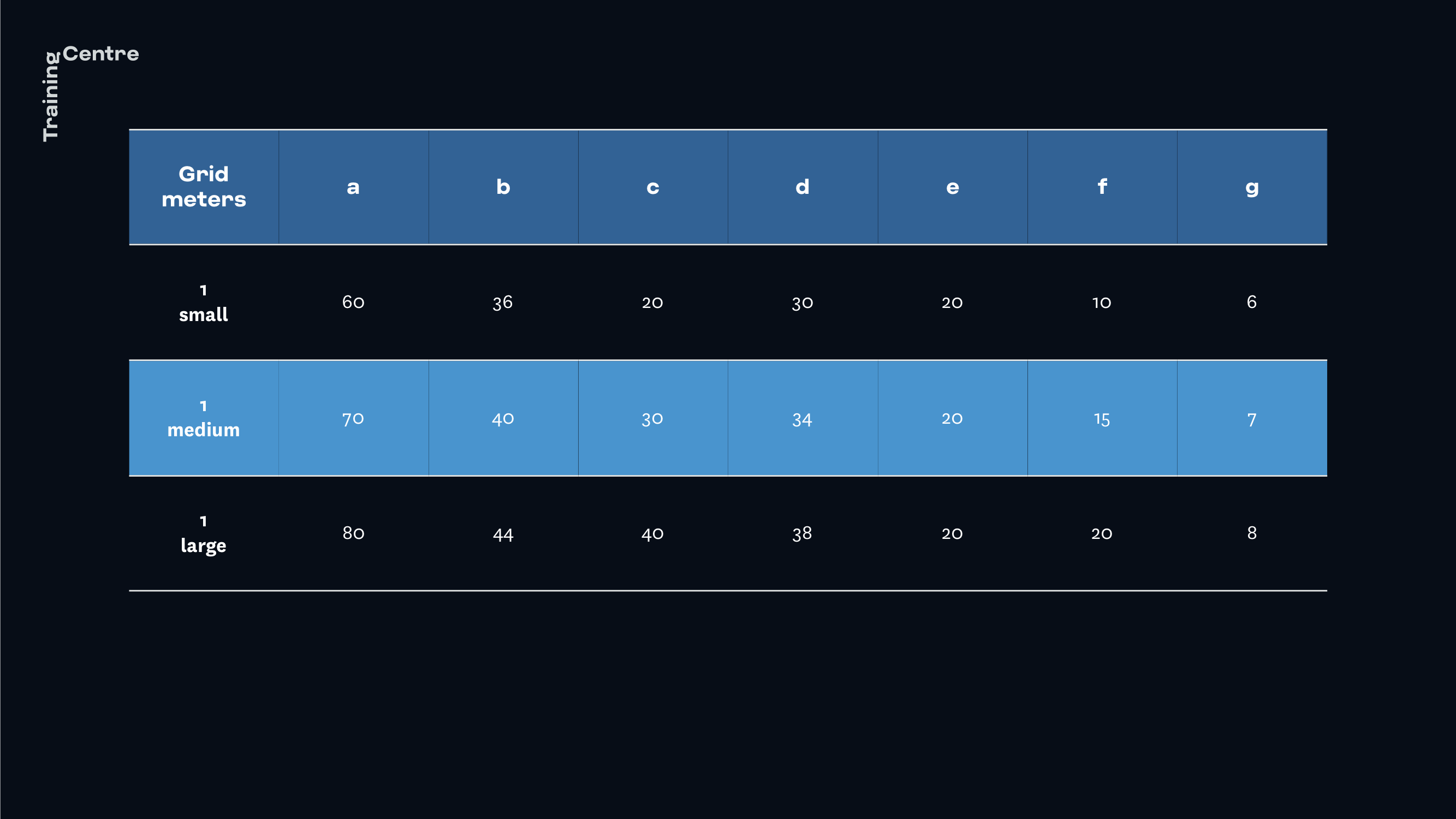
Drill duration
- 5 players (10 players with 2 balls): 2 x 5-6 minutes
- 6 players (12 players with 2 balls): 2 x 6-7 minutes
- 7 players (14 players with 2 balls): 2 x 7-8 minutes
- 8 players (16 players with 2 balls): 2 x 8-9 minutes
Approximate workload intensity
- 5 players (10 players with 2 balls): very high to high
- 6 players (12 players with 2 balls): high to medium
- 7 players (14 players with 2 balls): medium to low
- 8 players (16 players with 2 balls): low
Coaching points that apply to all drills
- Give players 1-2 minutes to find their tempo and familiarise themselves with the scenario, before gradually raising the tempo and intensity.
- Devote a period of time (minimum of 3-4 minutes) during each drill to focus on high tempo, correct technique, technical balance (two-footedness) and the reinforcement of awareness habits.
- The drill duration relates to the ball rolling time. Stop the watch if the drill is interrupted for more than a few seconds.
- Encourage players to move quickly between positions. This is particularly relevant when there are few players involved in the drill, e.g. 5-6 players with 1 ball or 10-12 players with 2 balls.
- When performing the drills with 6 players, a coach/server is required to permanently occupy one of the starting positions and play the first pass in each rotation. Where 5 players are involved, a coach/server is required at the starting positions at both ends of the grid.
- To ensure continuous, uninterrupted ball rotation, a minimum of 20 balls is required (10 at each starting position).
- Where a session involves a particular focus on player positioning, the drills offer the flexibility to allow players to remain in the same position, i.e. defenders and midfielders can play passes 2 and 3, with attacking midfielders and forwards making the runs that offer them exposure to the sprint/HSR zones. However, this will result in large disparities in speed metrics and intensity levels between individual players. In addition, it will also pose a challenge for the coach in terms of ensuring that the sprint/HSR workloads are well distributed amongst the players. Rotating players between positions represents the most effective means to achieving a high volume speed metrics outcome for all players.
Drill 1: diagonal pass to meet a diagonal run in behind
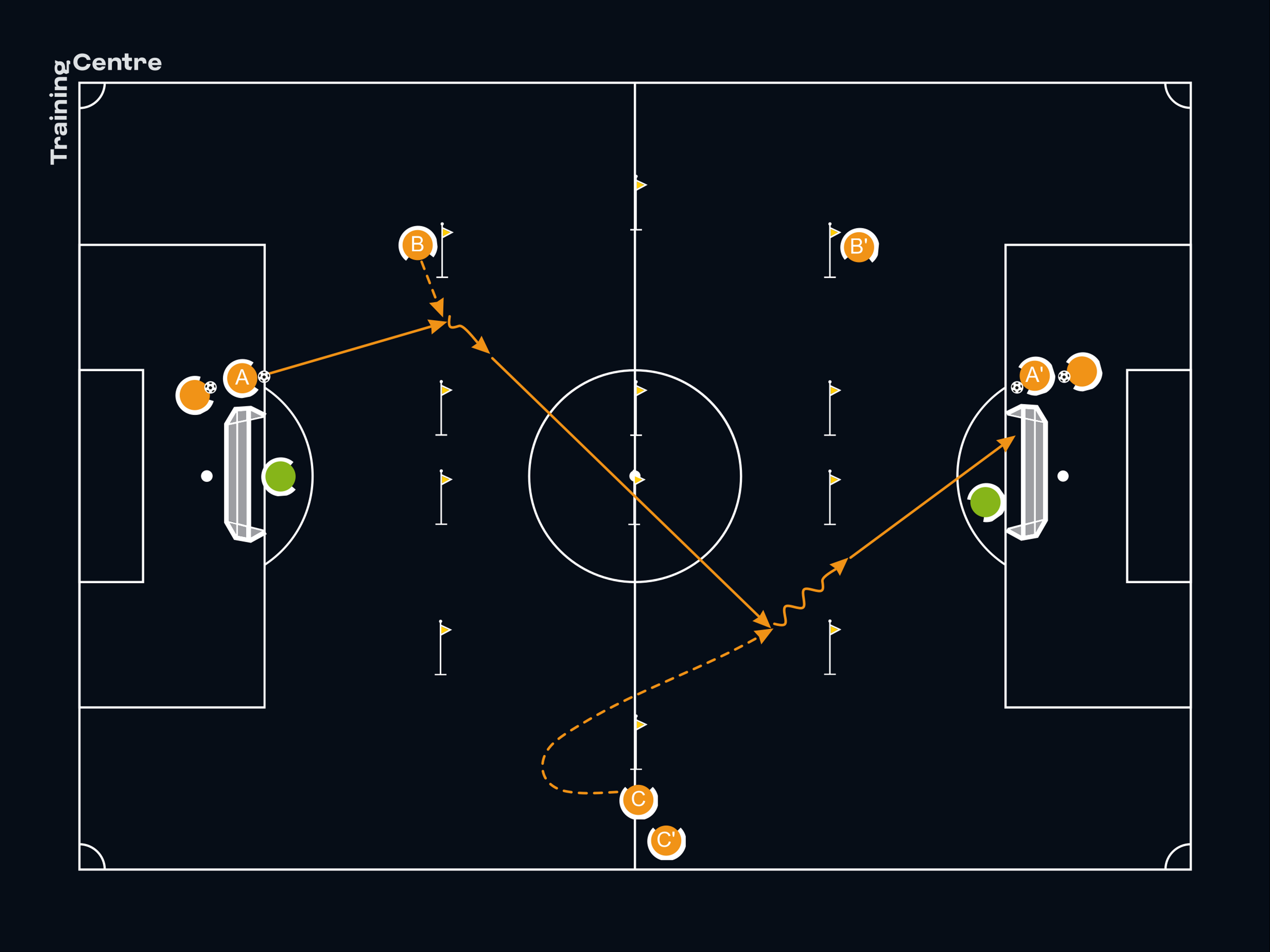
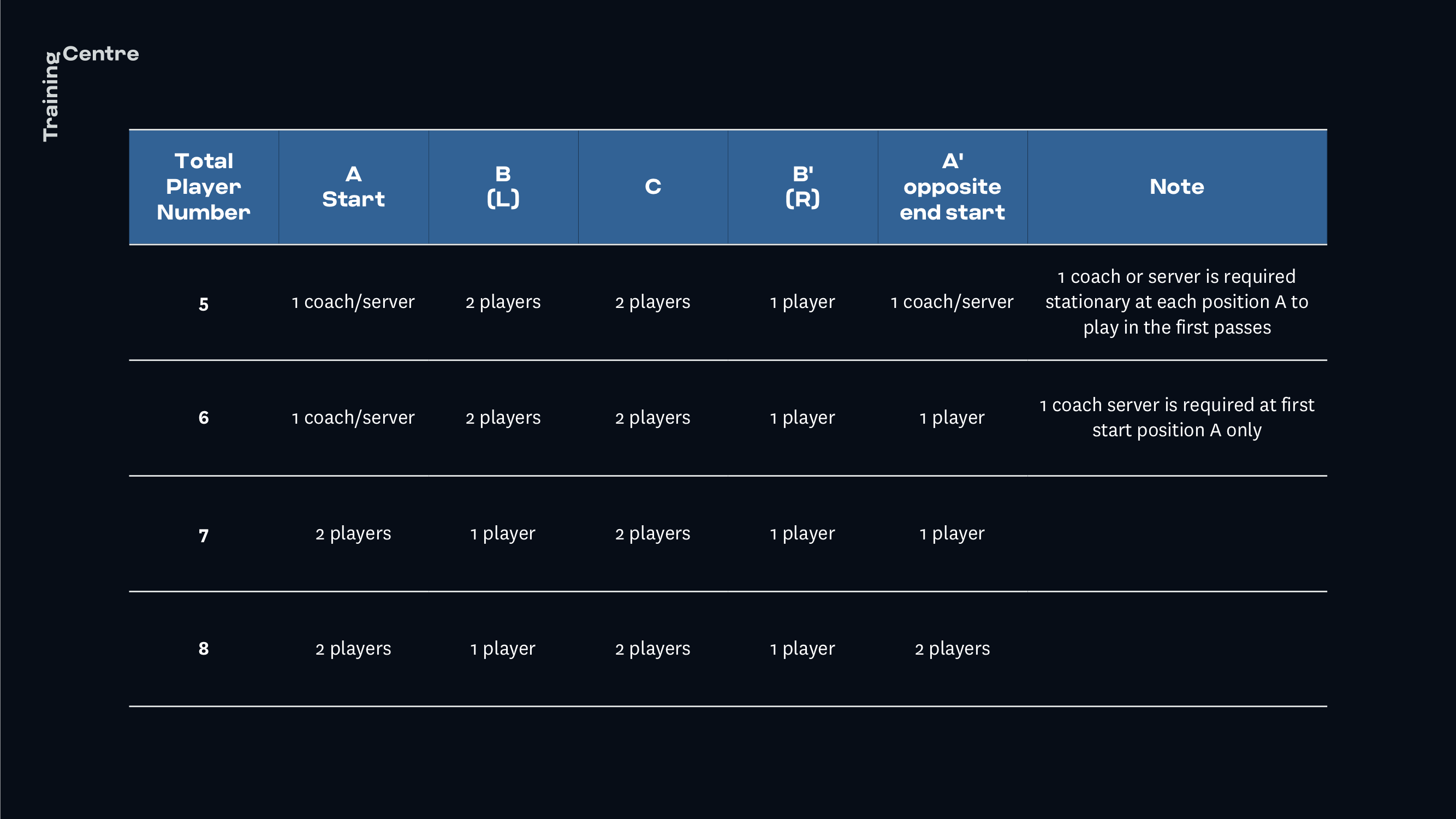
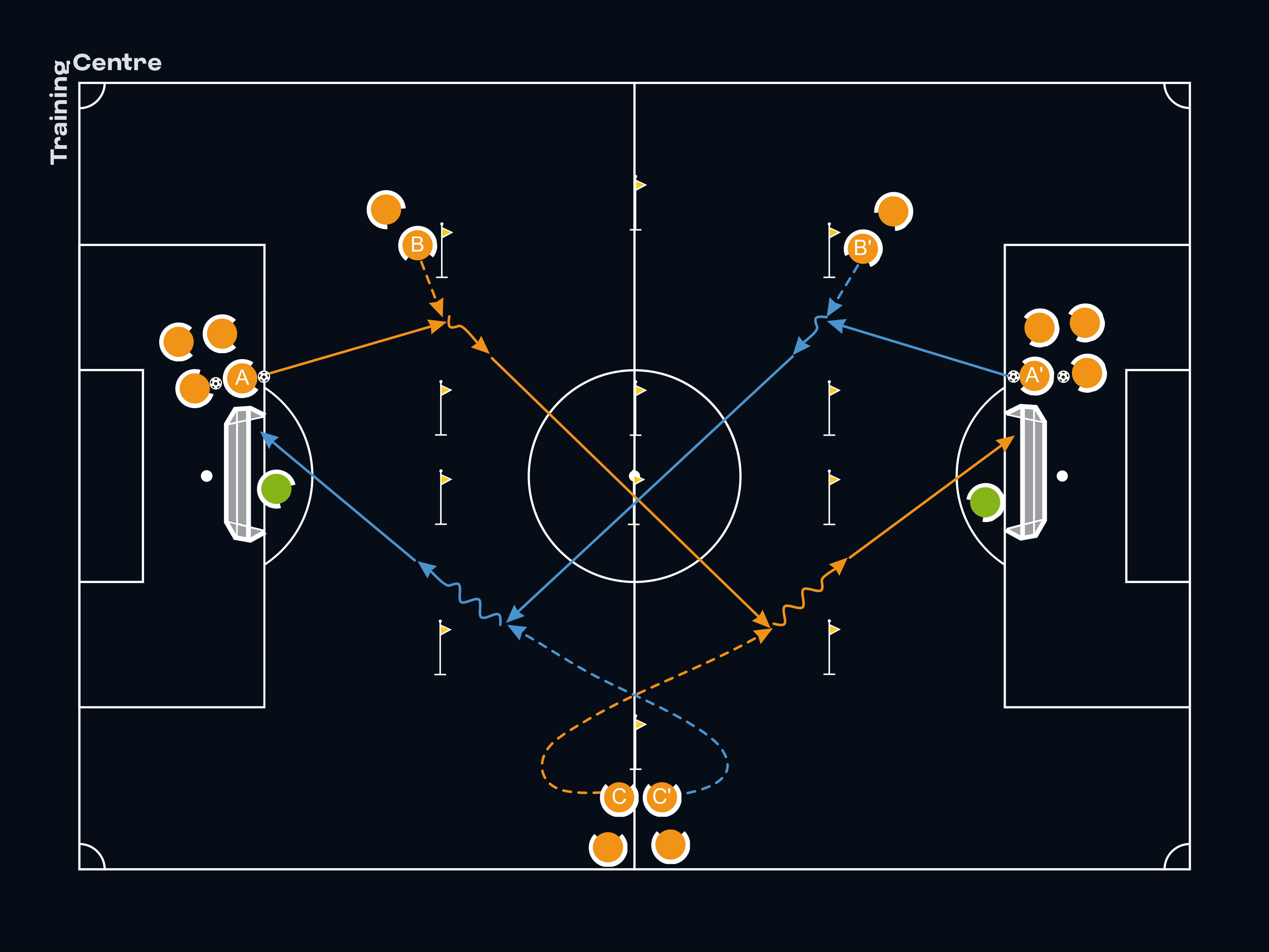
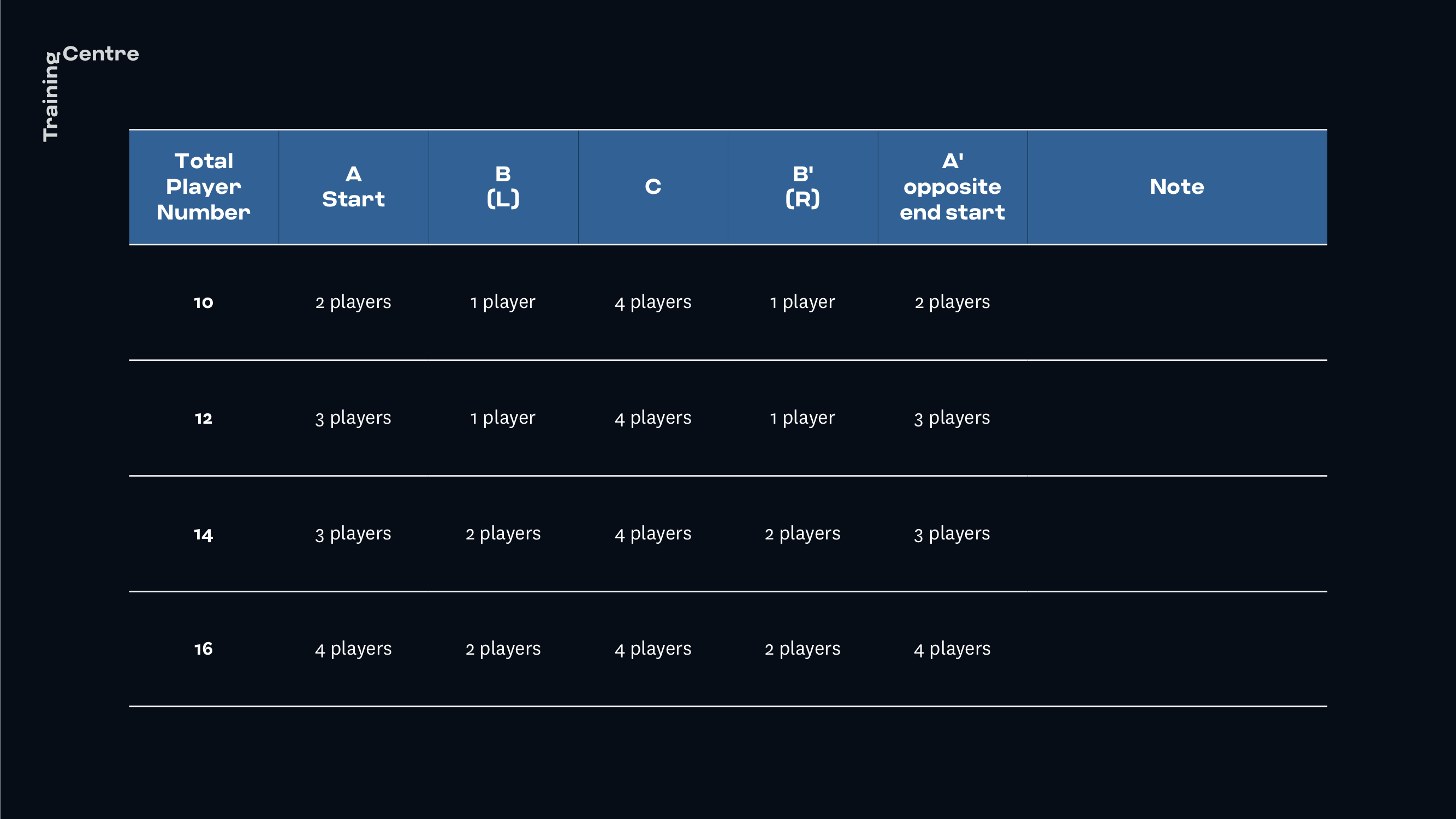
-
A plays the ball towards the wide positioned pole for B.
-
B moves the ball inside for approximately 5 m, and plays a long diagonal pass into C’s acceleration path.
-
C should drop back 5-10m from the pole position, before timing their run to meet B’s pass.
-
C should try to finish on goal with minimal touches.
-
The sequence continues from the opposite starting position.
-
When the rotation features 2 balls: the sequence begins with a pass played simultaneously from A and A’.
-
Every player follows their pass to ensure player rotation.
-
A becomes B.
-
B becomes C.
-
C becomes A’.
-
When 5 or 6 players are involved in the drill, coaches/servers are required to occupy the A/A’ starting positions. Where the coaches/servers occupy both starting positions, the players rotate between positions B and C.
-
Place the emphasis on playing a quality pass into the path of the next player in the sequence.
-
This drill promotes technical balance, requiring the use of the left and right foot in equal measure.
-
On receiving the ball, B should turn infield, lifting their head up, before playing a long diagonal pass.
-
To promote technical balance, when turning infield to play the long, right-to-left diagonal pass, the emphasis for B is on the left foot. The opposite applies for the left-to-right diagonal pass, where the emphasis should be on the right foot.
-
To reinforce good footballing habits, C should drop back 5-10m from the pole position, while scanning towards B to time their acceleration to meet B’s pass.
-
C: each individual acceleration should cover a distance of approximately 20-25m in the sprint/high-speed running (HSR) zones.

Drill 2: a vertical pass played to meet a deep in-behind run
.jpg)
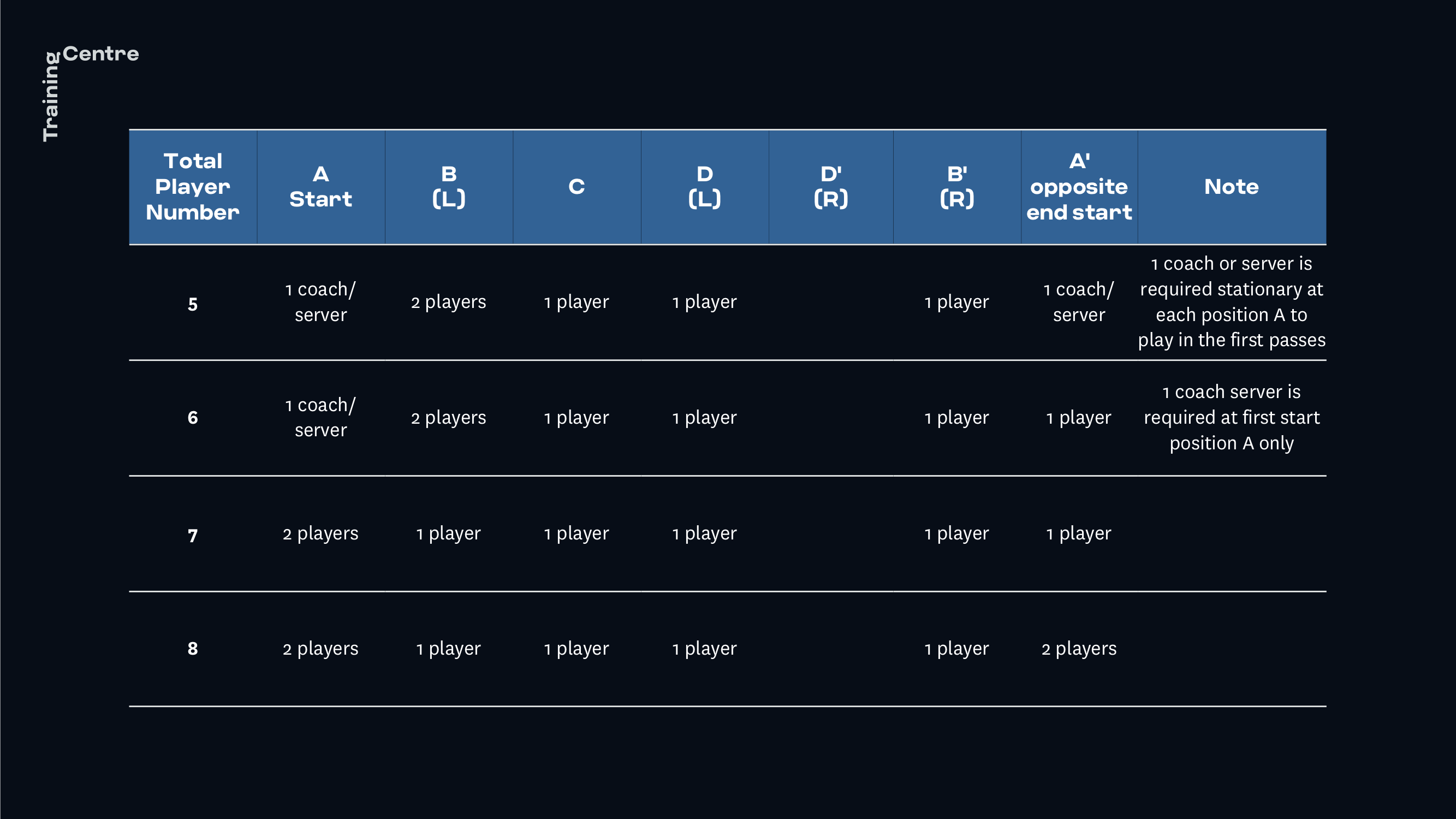
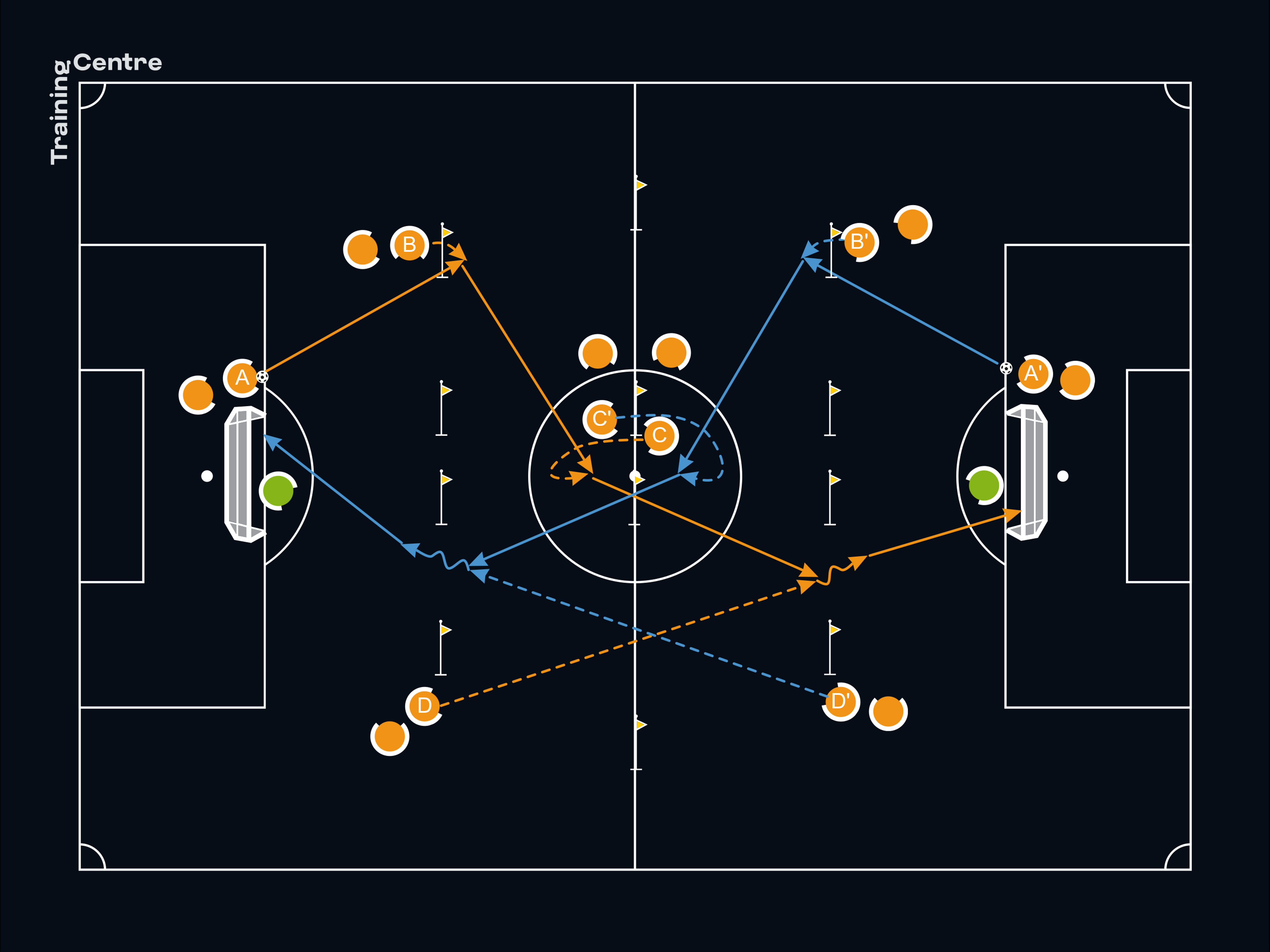

-
A plays a pass towards B at the wide positioned pole.
-
B allows the ball to run wide of the pole before playing an infield pass to C.
-
C moves infield to receive the ball and turns out to play a vertical pass to meet D’s deep run in behind.
-
After accelerating on to the ball, D finishes the move with a shot on goal.
-
The sequence continues from the opposite starting position.
-
When the rotation features 2 balls: the sequence starts with passes played simultaneously from A and A’.
-
Every player follows their pass to ensure player rotation.
-
A becomes B.
-
B becomes C.
-
C becomes D' at the opposite pole.
-
D becomes A'.
-
When 5 or 6 players are involved in the drill, coaches/servers are required to occupy the A/A’ starting positions. Where the coaches/servers occupy both starting positions, the players rotate between positions B and C.
-
Place the emphasis on playing a quality pass into the path of the next player in the sequence.
-
This drill promotes technical balance, requiring the use of the left and right foot in equal measure.
-
As B allows the ball to run beyond the pole/mannequin, C should quickly drop back 5m to receive the ball on the half-turn, before nudging it forward and getting their head up to assess the placement of the pass to D.
-
To reinforce good footballing habits, while building speed from a deeper position, D should scan infield to time their full power sprint with the forward touch from C.
-
D: each individual acceleration should cover a distance of approximately 20-30m in the sprint/HSR zones.
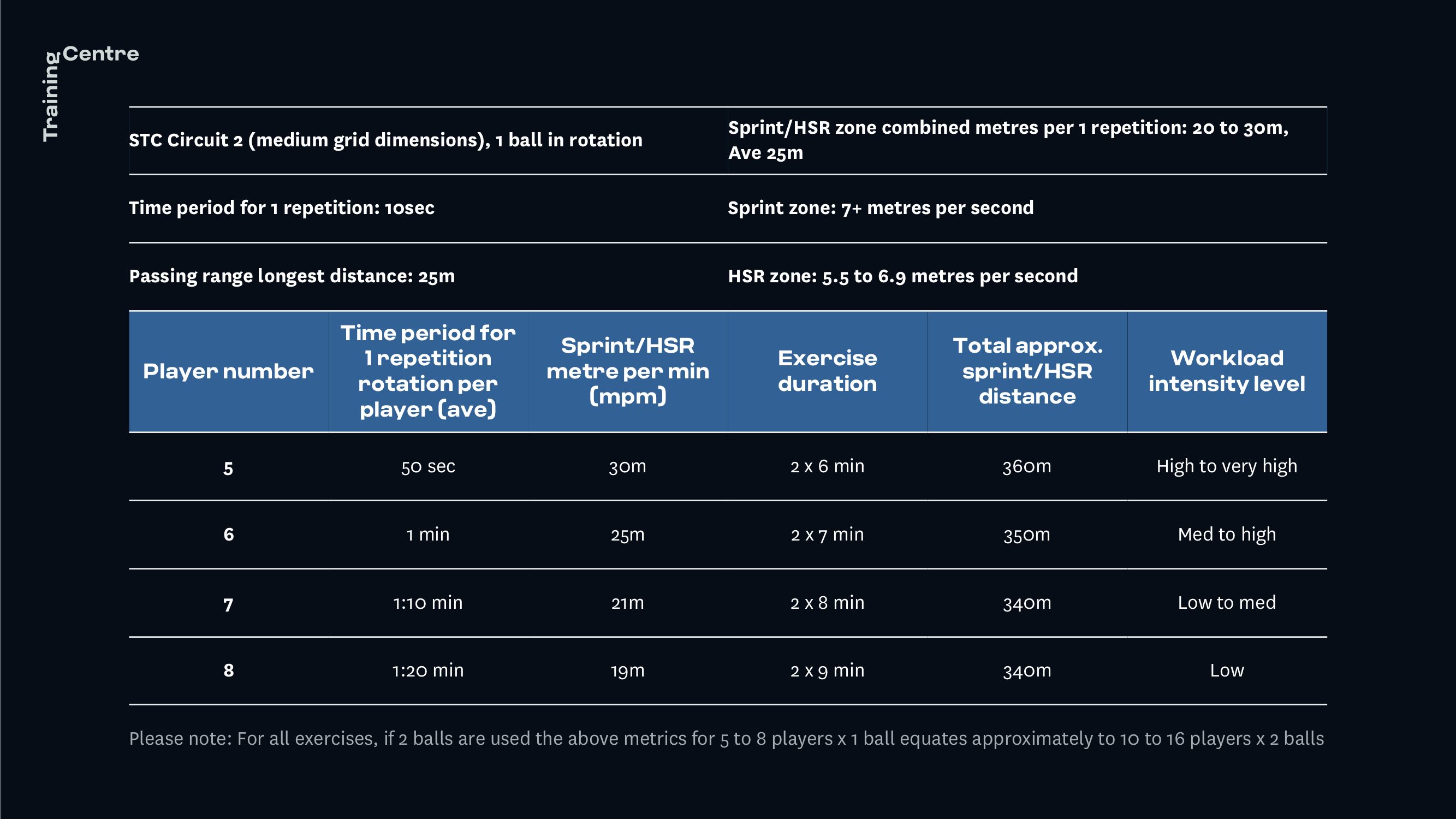
Drill 3: give-and-go, sprint into the box and finish
.jpg)

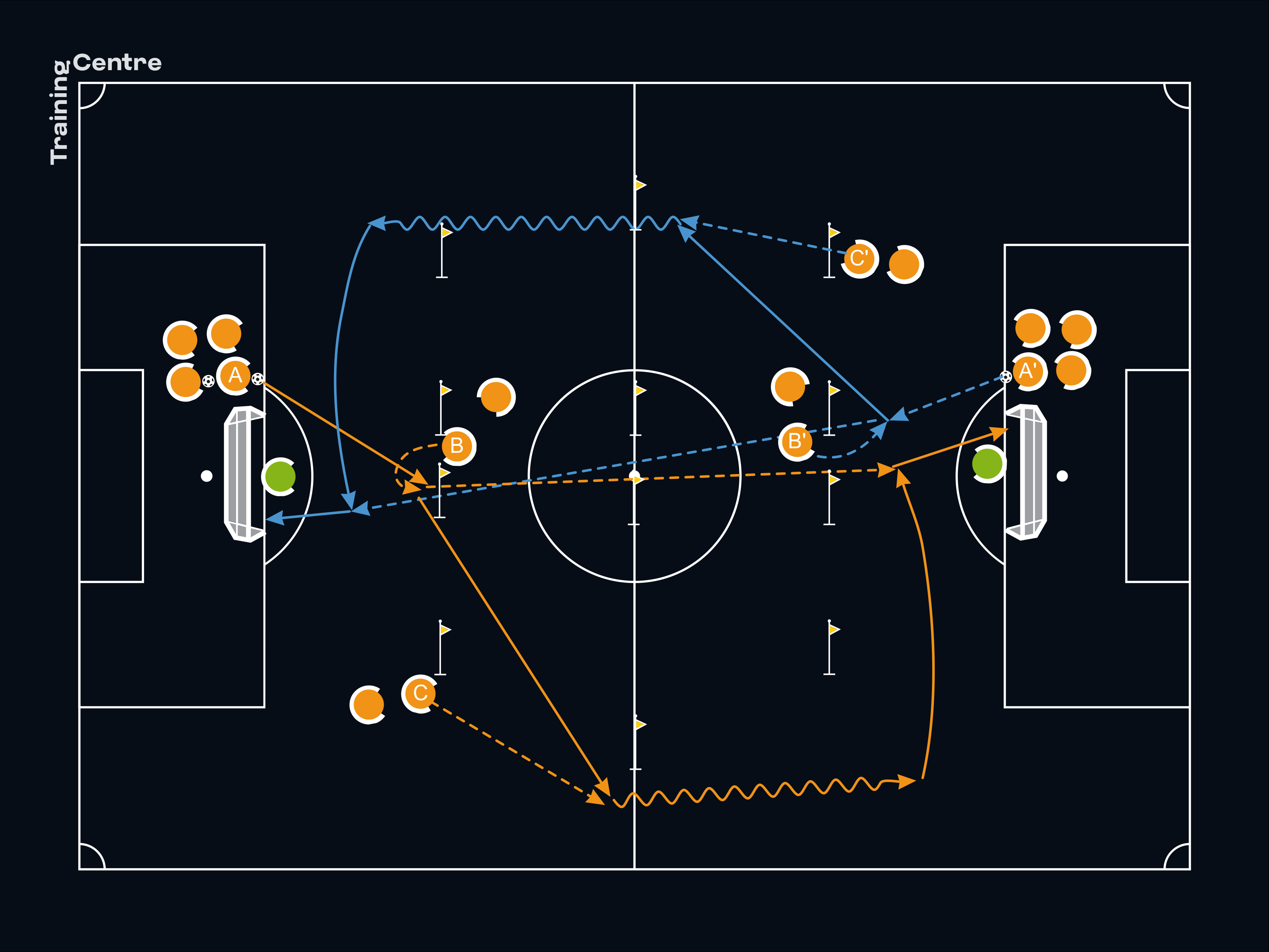

-
A plays the ball infield to B.
-
B advances between the poles/mannequins to receive the ball on the half-turn forward.
-
B then plays a give-and-go, stroking the ball out wide towards the middle pole/mannequin and into C’s forward path, before racing forwards at pace to latch on to C’s return ball before finishing on goal.
-
When the rotation features 2 balls: the sequence starts with a pass played simultaneously from A and A’.
-
Every player follows their pass to ensure player rotation.
-
A becomes B.
-
B becomes C'.
-
C becomes A’.
-
When 6 or 7 players are involved in the drill, coaches/servers are required to occupy one or both of the A/A’ starting positions. Where the coaches/servers occupy both starting positions, the players rotate between positions B and C.
-
Place the emphasis on playing a quality pass into the path of the next player in the sequence.
-
To promote complete technical balance, two sets of this drill are required: set one should be a clockwise rotation and set two an anticlockwise rotation.
-
As B turns to play wide, C should scan across to time their forward movement with B’s pass. On receiving the ball, C should take a forward touch into the movement path, setting up a diagonal pass into B.
-
To promote technical balance, when playing the long right-to-left diagonal pass, C should play the ball in with their right foot. The opposite applies when playing the left-to-right diagonal pass, with the emphasis on a left-footed pass.
-
C: each individual acceleration (both on and off the ball) should cover a distance of approximately 30-35m in the sprint/HSR zones.

Drill 4: vertical combination move coordinated with a diagonal, infield run

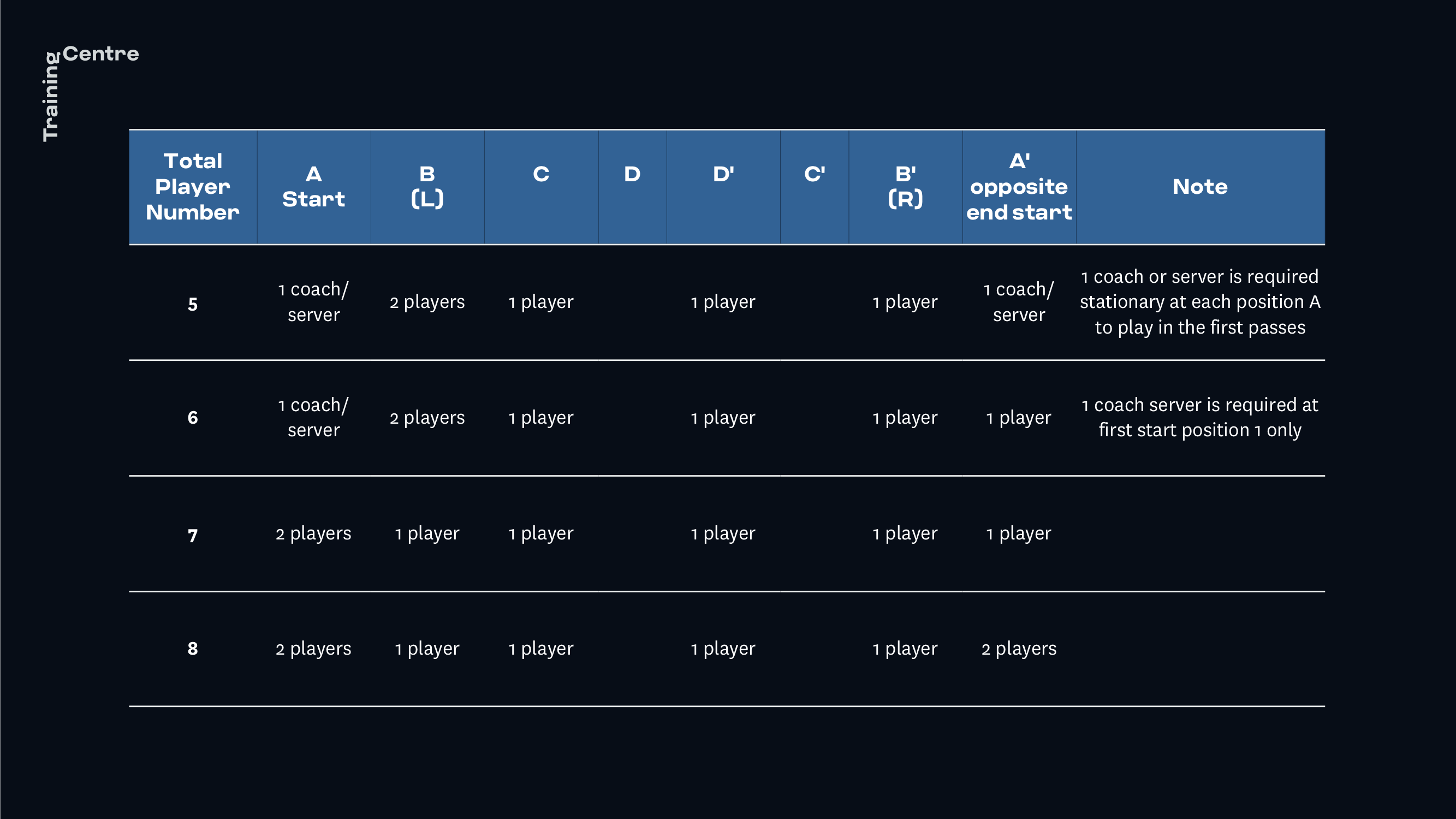
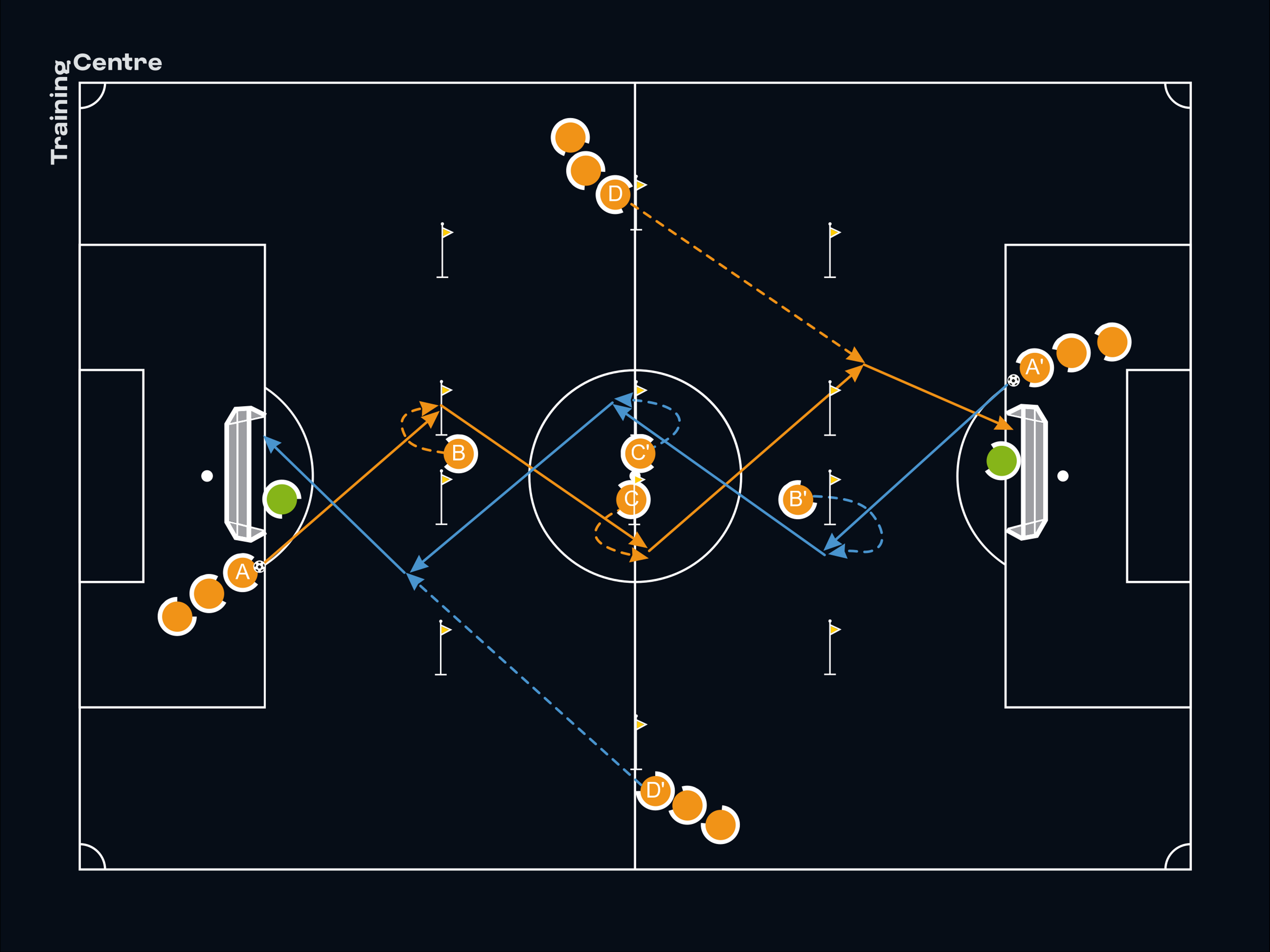
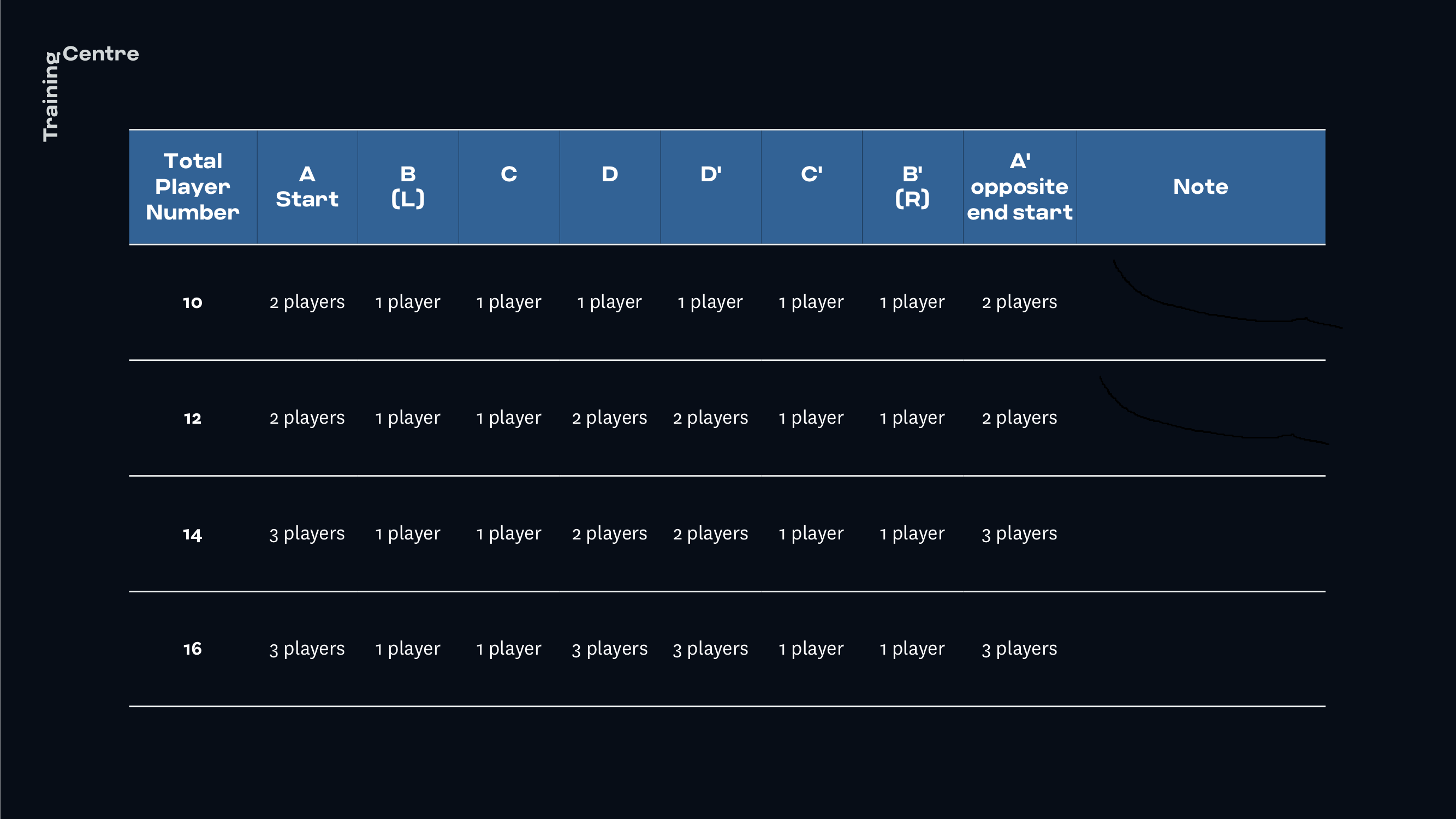
-
A plays an infield pass to B.
-
Turning forward with their first touch, B plays an angled pass into C’s forward run.
-
C slots the ball through to meet D’s run in behind.
-
D meets the ball with a finish on goal.
-
The sequence continues from the opposite starting position.
-
When the rotation features 2 balls: the sequence begins with a pass played simultaneously from A and A’.
-
Every player follows their pass to ensure player rotation.
-
A becomes B.
-
B becomes C.
-
C becomes D' at the opposite pole.
-
D becomes A’.
-
When 5 or 6 players are involved in the drill, coaches/servers are required to occupy the A/A’ starting positions. Where the coaches/servers occupy both starting positions, the players rotate between positions B and C.
-
Place the emphasis on playing a quality pass into the path of the next player in the sequence.
-
NB: to promote complete technical balance, two sets of this drill are required: set one should be a clockwise rotation and set two an anticlockwise rotation.
-
As A is about to pass, B creates space to receive the ball half-turned forward.
-
To promote technical balance, when A starts the sequence with a diagonal right-footed pass played in from beyond the left side of the goal, B should shift the ball forward with their right foot before playing a right-footed pass to C. The opposite applies when receiving the ball from beyond the right side of the goal, where B and C should focus on using their left foot.
-
As B prepares to play a pass, C should move to receive on the half-turn, nudging the ball forward with their first touch, while scanning over to D to gauge the timing and weight of the pass to be played to D.
-
To promote technical balance, when playing the diagonal right pass in for D, C should focus on playing a left-footed pass. The opposite applies when playing the left diagonal pass, with greater emphasis to be placed on playing a right-footed pass.
-
While C scans over to D, D should in turn scan infield to time their acceleration to meet C’s pass.
-
D: each individual acceleration on the ball should cover a distance of approximately 20m in the sprint or HSR zones.
